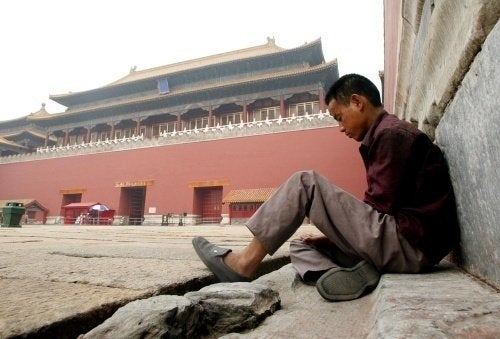
What could be reassuring about killer Chinese toothpaste, toys and tires? Hard to believe, but there's a silver lining. The rash of product recalls reveals that China is not the manufacturing juggernaut we fear -- and that America has an edge we tend to overlook.
Sure, greed factors into why Chinese suppliers make defective, even harmful products. But often it's because of just plain ineptitude.
If you visited a typical Chinese factory, you'd see why. It lacks capital, technology and know-how. Its workers place obedience over quality. And it sits along an endless chain of middlemen.
On average, it takes China 17 separate parties to produce a product that would take us three. Unlike Japan in the 1980s, little companies drive China's economic growth, not big ones. China's industries are composed of hundreds of thousands of tiny factories and farms -- plus traders, brokers, haulers and agents, all of whom take control of the goods and materials but add little value to the product. With every additional player in the chain, the cost, risk and time grow. Effective quality control in this environment is difficult.
So is effective cost control. Despite cheap labor, making goods in China is often more expensive than in the U.S. Far from being a bottomless ATM of cheap consumer goods, China is a risky, costly and time-consuming place to do business.
Yet polls show a majority of Americans believe China has mastered basic manufacturing -- and it's now barreling into our high-tech backyard. That's false. As the product recalls demonstrate, China can barely make low-value goods reliably, much less higher-value ones. The problems are structural, not the result of a few bad apples.
To compete head-to-head with the American economy, China will have to revolutionize the very way its industries are organized. It must shake out the thousands of low-value middlemen and integrate the tiny factories into larger, more competitive companies. It must train a workforce in modern technology and business practices. And, it must instill transparency and a uniform rule of law. Such an effort could span generations.
Meanwhile, we're expected to believe that America will import Chinese passenger cars in just two years. Making products that live up to international standards requires more than simply modern production lines. Your entire corporate culture, along with that of your suppliers and buyers, must be focused on minimizing errors and defects. Rattle around in a Chinese-made car and you'll see tangible proof of why they've had to delay their launch into the U.S. market again and again -- and just how far China still has to go before it can make a car Americans will buy.
The U.S. economy, on the other hand, can efficiently produce a wide variety of goods and services. In most industries, we're decades ahead of China. And, huge swaths of our economy -- like the services sector and high-tech manufacturing -- don't even exist in China yet.
America possesses this competitive edge at the precise moment when Chinese consumers are buying more than ever before. China's middle class already outnumbers the combined populations of the United Kingdom and France. And it's expanding at a rate not seen since the industrial rise of the U.S., Europe and Japan.
Chinese consumers want modern homes, schools and hospitals, as well as advanced technologies and infrastructure. Local sources can't keep up with demand. So China imports most of the higher-value goods, materials and services it needs. As a result, China is increasingly buying American and growing five times faster than any other market for U.S. exports.
Nearly all sectors of the U.S. economy are experiencing unprecedented Chinese demand. And while most Americans fear the flood of cheap Chinese goods, many of these products are, in fact, composed of U.S. raw materials and components. The Chinese apparel that lines our shelves is made from American cotton; the housewares from American steel; the computers from American technologies. So as Chinese imports to the U.S. surge, American exports to China surge, too. China is buying from large U.S. companies as well as small ones, and China is the fastest-growing export market for small business.
We should take another hard look at the "China Century." China's rise need not drive America's fall. By tapping into its expansion and capitalizing on our strengths, America's companies have a once-in-a-century windfall opportunity to build value, make money and create jobs here at home -- not shutter the shop.
Putting near-term gains aside, though, the next century will not be led by the country that can make the cheapest copy of a spark plug. It will be led by innovators and entrepreneurs, America's unrivaled assets. Innovation -- not imitation -- will create jobs and maintain America's economic primacy in the century ahead.
The scope of the product recalls will surely widen as we start to scrutinize what we're importing from China. Remember, these recalls tell us as much about China as they do about America. The silver lining is our inherent strength.
Originally published in The Wall Street Journal
Jeremy Haft provides more China analysis, tools and resources at AlltheT.com.